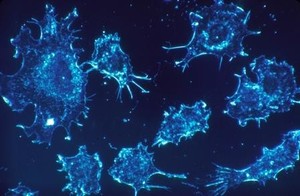Several best-selling monocloncal antibodies (mAbs) are due to lose patent protection; presenting regulatory authorities with a complex set of challenges as they prepare for the arrival of novel biosimilars, note Ebbers and co-authors at Utrecht University, The Netherlands [1].
Challenges and opportunities for anticancer mAbs
Biosimilars/Research
|
Posted 20/09/2013
 0
Post your comment
0
Post your comment

According to the latest European Union (EU) guidelines, the primary sequence of a biosimilar antibody should be identical to its reference product. But post-translational modifications, such as glycosylation or oxidation, can affect the immunogenic potential of a product. On top of that, differences in the production of cell lines and/or other production processes can cause differences in effector functions, pharmacokinetics and pharmacodynamics.
New guidelines
In answer to this, the EU guidelines outlining the approval criteria for biosimilar mAbs state that a case-by-case approach will be adopted to determine the requirements of the comparability exercise.
There are currently six mAbs authorized as anticancer agents. Among these, bevacizumab (Avastin) is particularly challenging when it comes to the comparability assays needed for biosimilar approval.
Bothersome bevacizumab
Bevacizumab is an anti-vascular endothelial growth factor (VEGF) antibody, but – apart from human VEGF – it only binds to cynomolgus monkey and rabbit VEGF. This immediately cuts down the choice of animal models for preclinical studies, and the choice is cut further because, in rabbits, bevacizumab induces the formation of antibodies after only eight days. This leaves just non-human primates, and an associated host of ethical and cost issues. The situation is not helped by the fact that two common side effects seen in clinical trials with bevacizumab –hypertension and proteinuria – are not seen in studies with non-human primates.
Similarly, differences in in vitro studies do not always translate to differences in the clinic, as seen when comparing studies between bevacizumab and ranibizumab. Both these products have been used successfully to treat age-related macular degeneration (AMD). But although they share similar clinical efficacy, they do not share similar in vitro results.
It does not get any better in the clinic. There are no pharmacodynamic biomarkers for the clinical efficacy of bevacizumab; so confirmatory clinical efficacy studies will be needed. Commonly applied endpoints are preferred in the biosimilar mAb guideline, including overall survival or progression-free survival, but these might not be sensitive enough for establishing comparability. The widely used oncology endpoint ‘response evaluation criteria in solid tumours’ (RECIST) might also fall short because treatment with bevacizumab does not result in tumour shrinkage. So it is possible that accepted clinical endpoints will not be suitable in the comparisons with bevacizumab.
Great opportunities
Bevacizumab was first authorized in the US in 2004, as an add-on therapy for metastatic colon and rectal cancer. It was authorized in Europe in 2005 as an add-on therapy for non-small-cell lung carcinoma, colorectal neoplasms and breast neoplasms, among others. The patent on Avastin will expire in the US in 2019 and in the EU in 2022 [2]. Unsurprisingly, there is great interest in developing biosimilar versions of bevacizumab and other highly successful mAbs. Clearly it will be challenging to identify biosimilars of products like bevacizumab, and there will be no ‘one size fits all’ answer.
Re-writing the rules
Based on data available for bevacizumab, Ebbers and co-authors have reviewed the strengths and weaknesses of preclinical and clinical models and looked at the possible application of novel endpoints to the biosimilar comparability exercise. Their case study tells us that such anticancer products might force regulators to reconsider the objective of the comparability exercise. Rather than ‘demonstrating biosimilarity’, as required by current European legislation, Ebbers argues this could perhaps be changed to ‘exclude excessive dissimilarity’.
This series of four articles that follow provide a window on the issues faced by regulatory authorities as they begin to verify biosimilar monoclonal antibodies for cancer treatment.
Related articles
Biosimilar monoclonal antibodies – time for a regulatory rethink
Biosimilarity of anticancer monoclonal antibodies in the clinic
Establishing mAb biosimilarity before reaching the clinic
Oncobiologics and Viropro make biosimilar deal
References
1. Ebbers HC, van Meer PJ, Moors EH, Mantel-Teeuwisse AK, Leufkens HG, Schellekens H. Measures of biosimilarity in monoclonal antibodies in oncology: the case of bevacizumab. Drug Discov Today. 2013;18(17-18):872-9.
2. GaBI Online - Generics and Biosimilars Initiative. US$67 billion worth of biosimilar patents expiring before 2020 [www.gabionline.net]. Mol, Belgium: Pro Pharma Communications International; [cited 2013 Sep 20]. Available from: www.gabionline.net/Biosimilars/General/US-67-billion-worth-of-biosimilar-patents-expiring-before-2020
Permission granted to reproduce for personal and non-commercial use only. All other reproduction, copy or reprinting of all or part of any ‘Content’ found on this website is strictly prohibited without the prior consent of the publisher. Contact the publisher to obtain permission before redistributing.
Copyright – Unless otherwise stated all contents of this website are © 2013 Pro Pharma Communications International. All Rights Reserved.
News
FDA approves six denosumab biosimilars
EMA recommends approval for four biosimilars targeting three therapies
General
Samsung Bioepis wins Pyzchiva case; Regeneron patent rulings threaten foreign biosimilars
Chinese biosimilars go global: growth, partnerships, and challenges
What is the future for the US biosimilar interchangeability designation

Biosimilars/Research Posted 05/06/2025
Biosimilar clinical efficacy studies: are they still necessary?

Biosimilars/Research Posted 27/05/2025
The best selling biotechnology drugs of 2008: the next biosimilars targets








Post your comment